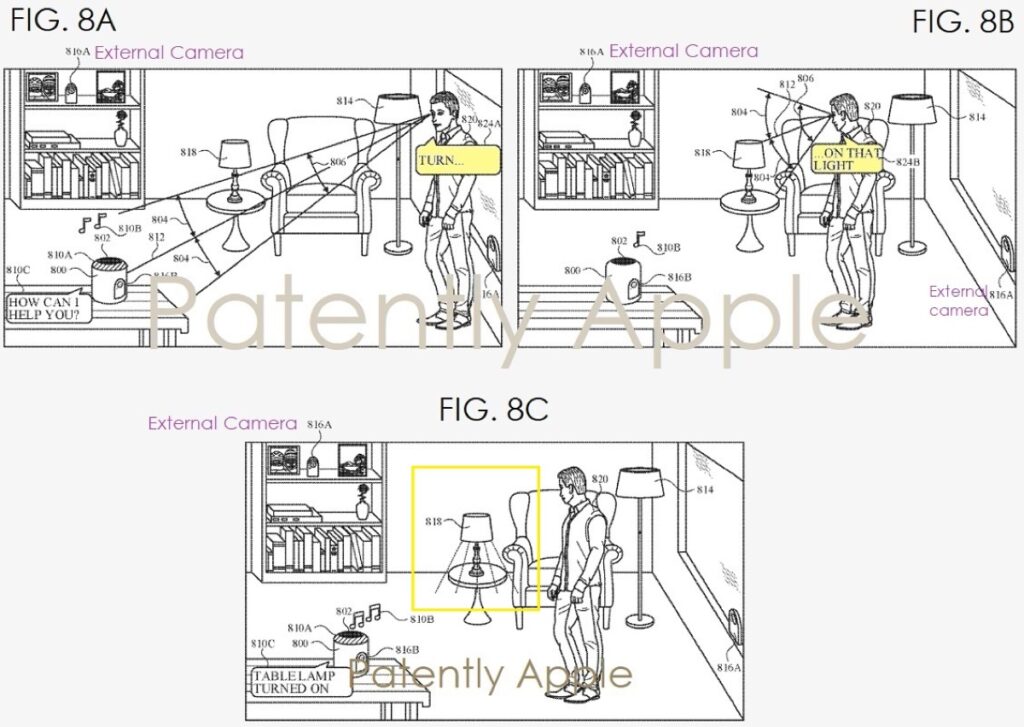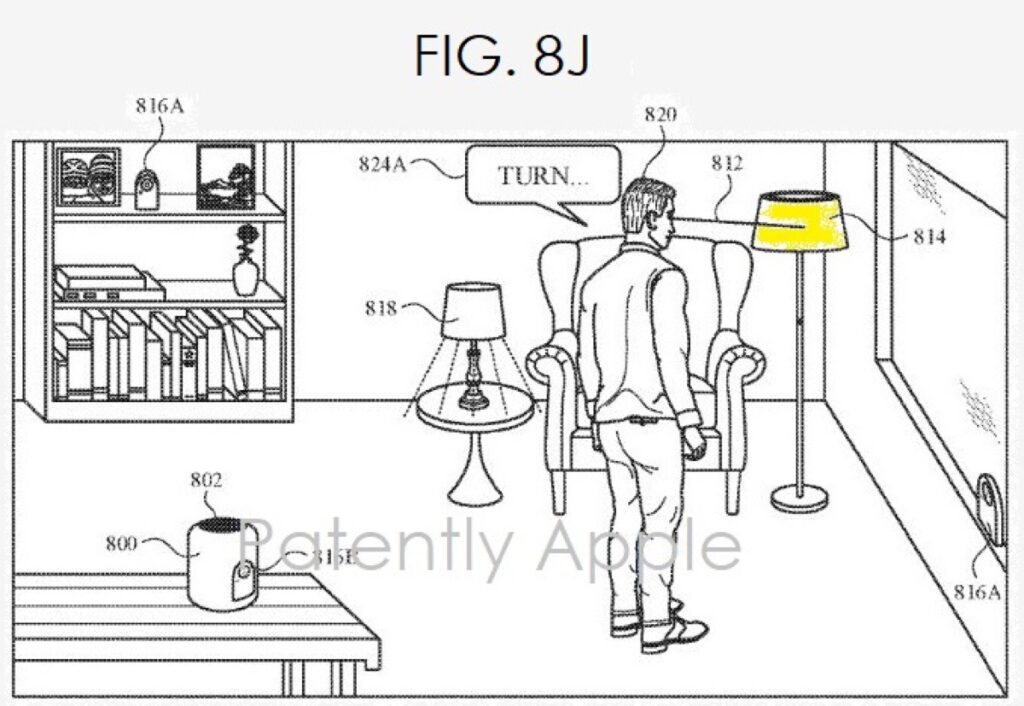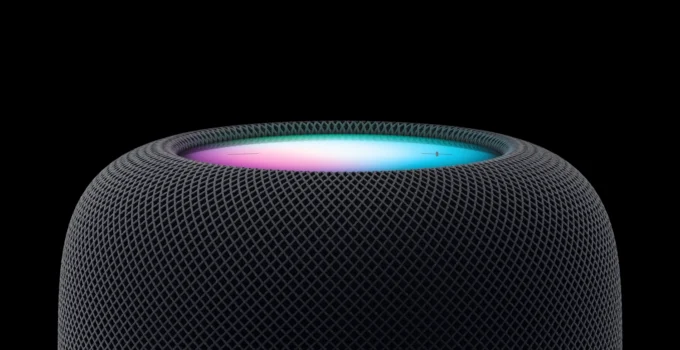Apple patents HomePod with remote Face ID camera. The United States Department of Patent and Trademark, signed the USPTO has granted Apple a patent covering a next-generation HomePod that will include an integrated camera for face control, remote Face ID facial recognition and voice commands for execution of certain actions.
In iOS 16.4 several bugs, Apple rush to release iOS 16.4.1
The patent, reported by PatentlyApple from which we report some images, also includes the ability for users to place additional cameras in a room that could function as “additional eyes” for the future version of HomePod. The additional cameras would be able to detect the user’s position and the direction of her gaze when, for example, Siri is requested to turn on a specific light in a certain room.
Figures 8A-8C appended to Apple’s patent show a user looking at the HomePod as he says the command “turn on… that light.” The user first looks at HomePod and then moves his head to look at the specific lamp he wants to turn on. HomePod executes the command while Siri responds, confirming that the execution has taken place, that the table lamp is on.

Also seen in the series of figures of the patent are new accessories, such as cameras (#816A) positioned in a room, one on a top shelf of a piece of furniture and the other on a window, as indicated in figure 8b of the patent.
Instead, in figure 8J we see a user giving a command to HomePod – Siri without looking directly at the device. In this case, the HomePod should be able to access the other connected cameras in the room to determine which lamp the user is requesting to turn on, in this case the floor lamp.
Not only that, the responses are personalized with Siri able to recognize that “Jane” is making the request. This indicates that the future next-generation TrueDepth camera used on this HomePod will be able to use remote Face ID facial recognition instead of the current version on the iPhone which has a limited range.

Apple’s patent also describes a series of light indicators located around the top of the HomePod, which could be used to communicate information to the user, such as an inability to understand a command. Alternatively, there may be an image of the lamp on the user’s Apple Watch, and by applying forceful pressure to the image of the lamp on the display with a finger, the brightness of the lamp could be adjusted.
In the description of Apple’s patent, it is highlighted that the device could integrate one or more distance and depth detectors for capturing environmental information, in order to create a three-dimensional model of an object (such as a face) within a scene acquired from a certain point of view. This component means the presence of in an advanced camera for Face ID, capable of acquiring measurement data at a distance.
In another section of the patent, Apple engineers argue that “in certain examples, the electronic object #1000 (HomePod) captures information of the user speaking using external (accessory) cameras, an iPhone or the camera built into the HomePod.
In some circumstances, HomePod may use the information collected to recognize your face or voice, or to calculate the user’s distance from the device in order to determine your identity. The new patent registration does not seem to contain major changes compared to what has already been seen since 2020.
It has long been known that Apple is working on a new HomePod with integrated screen and camera: this patent could present technologies and functions arriving with this model expected in 2024.



